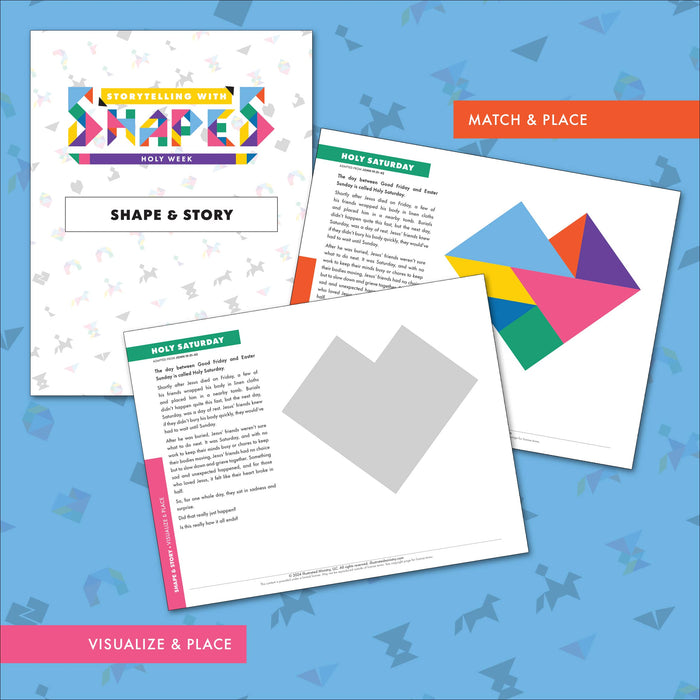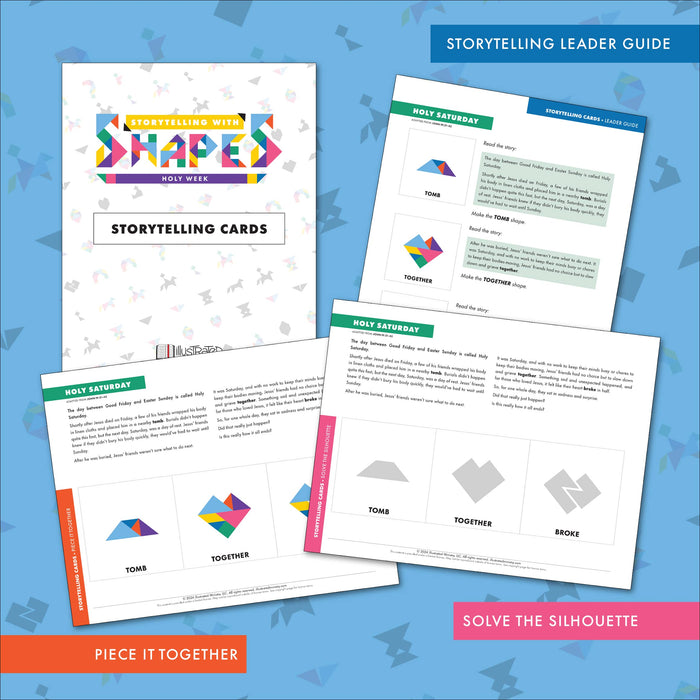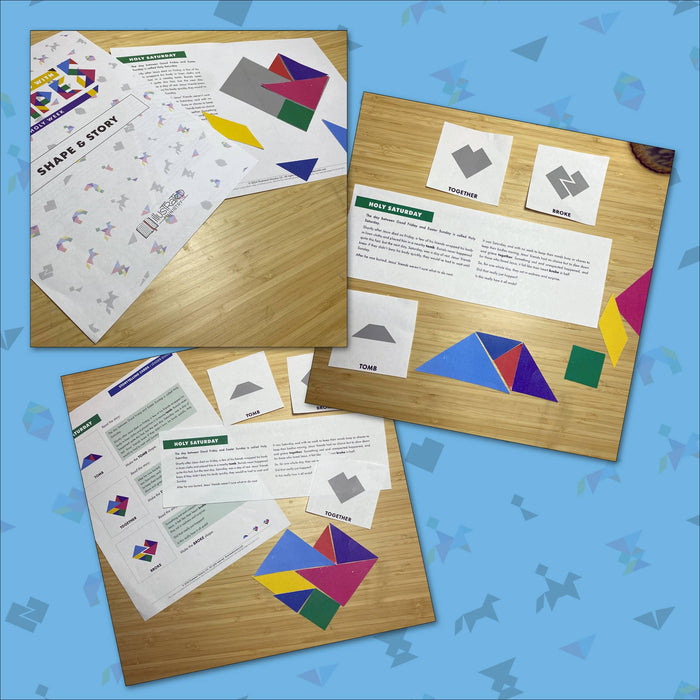
Storytelling with Shapes: Holy Week
Storytelling with Shapes: Holy Week is a digital product. No physical product will be shipped. Your purchase includes one Single-Entity license. Learn about Multi-Entity licenses here.
Storytelling with Shapes: Holy Week guides you through a creative, engaging, and tactile way of experiencing the stories of Holy Week. Because of the varying degrees of difficulties in the puzzles, Storytelling with Shapes: Holy Week can be used by many age groups, children, youth (6th–12th grade), and even during intergenerational events.
Storytelling with Shapes: Holy Week uses seven individual shapes (tans). When these tans are combined, they create larger shapes (tangrams), helping participants imagine the story. An ancient Chinese story tells the legend of tangrams about a wise sage who, on his journey to bring a square sheet of glass to the king, fell, and the glass broke. When the sage presented the pieces to the king, he restructured them to form images that helped to tell of his journey. The king loved this way of storytelling and recreated the shapes out of wood. And that’s how tangrams were invented!
Participants using this resource will also tell of a journey, Jesus’ journey through Holy Week. For each of these events—Jesus’ triumphant entry on Palm Sunday, the Last Supper Jesus had with the disciples on Maundy Thursday, the events surrounding Jesus’ death on Good Friday, the questions and heartbreak Jesus’ followers faced on Holy Saturday, and the surprising, good news of Jesus’ resurrection on Easter Sunday–we’ve paraphrased the related scripture and created a mini-story for you.
Storytelling with Shapes: Holy Week includes five mini-stories (Palm Sunday, Maundy Thursday, Good Friday, Holy Saturday, and Easter Sunday), with shape templates of varying challenges and a storytelling leader guide, allowing participants of all ages to join the storytelling fun.
Shape & Story: Each mini-story contains one tangram, with two options available.
- Match & Place: Match the individual shapes to the shapes on the page and place each shape on its spot to form the large shape connected to the story.
- Visualize & Place: Visualize and experiment with how your shapes fit together to create the larger shape in the silhouette. Then, using all seven shapes, fill in the silhouette to solve the tangram puzzle.
Storytelling Cards: Each mini-story contains three tangrams, each with two options available. An included leader guide helps lead participants through the storytelling process, providing instructions on when to create the shapes as the story unfolds.
- Piece it Together: Make the tangram puzzles as you read the story. Arrange your shapes to piece the picture together from each storytelling card.
- Solve the Silhouette: Solve the tangram puzzles as you read the story. Arrange your shapes to form the silhouette from each storytelling card.
We hope this new way of telling, hearing, and shaping these Holy Week stories will allow for a deeper understanding of the events of Holy Week as we piece together how they fit into our lives today.
How can I use these?
Storytelling with Shapes: Holy Week can be used by children, youth, and adults of all ages as a creative way to enter into the stories of Holy Week.
- Sunday School: take time on Palm Sunday and Easter to walk through the events of Holy Week with your tangrams. This is a creative way to help solidify the events of the Holy Week and Easter stories with your participants.
- Youth Group: make life-size versions of the tangram shapes and see which groups can assemble each story fastest! Also, these can serve as tangram fidget devices as you lead lessons on Holy Week and Easter.
- Adult Bible Studies & Intergenerational events: invite adults to use the tangram shapes to create the shapes from the stories during Bible studies; have intergenerational groups work together to figure out the silhouette puzzles. You could also see what other shapes they might come up with to represent additional parts of the Holy Week and Easter stories.
What will I receive?
You will receive a ZIP file with two PDFs: one for the Story & Shape activity and another for the Storytelling Cards activity.





